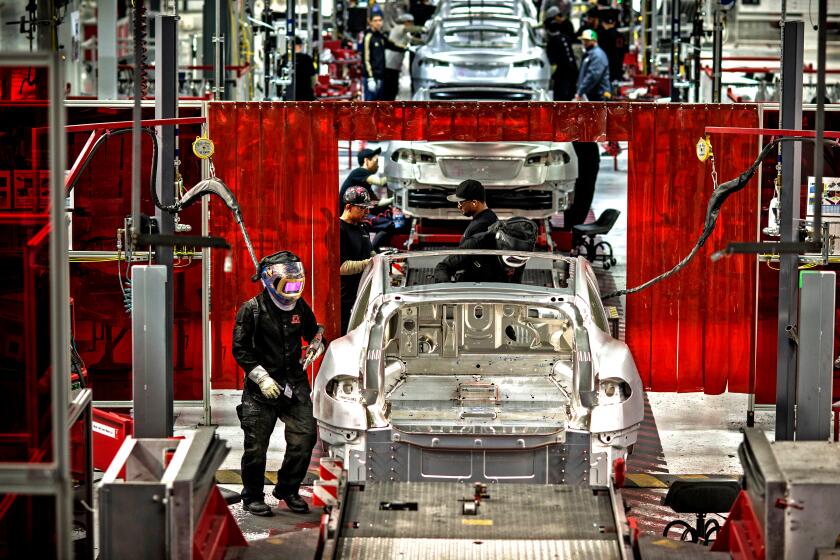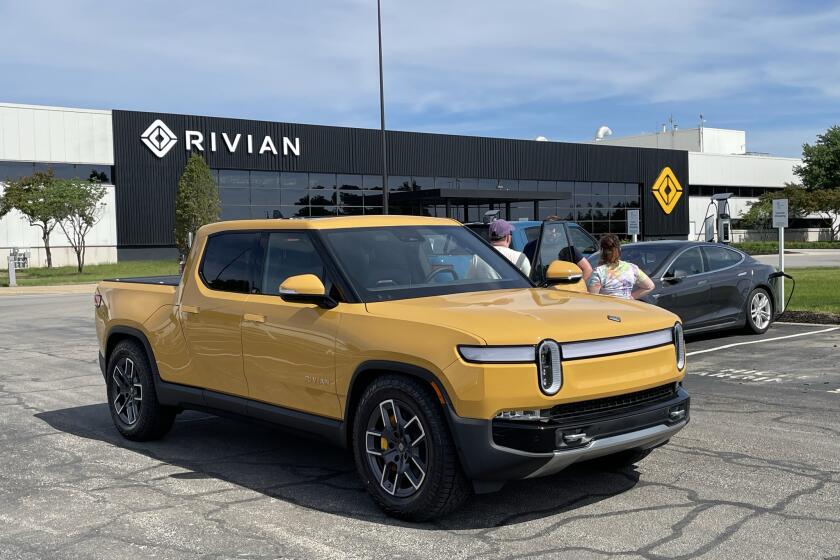Auto Makers Yet to Rev Investors’ Confidence
Why is it that almost nothing the world’s automotive industry does impresses investors?
This week DaimlerChrysler declared a triumphal entry to Asia’s market by agreeing to acquire a controlling 34% stake in Mitsubishi Motors of Japan. “We have closed the circle. We have covered all the markets of the world,” said Juergen Schrempp, DaimlerChrysler’s ambitious chairman.
But the stock market dropped the German American company’s share price almost $2 in the two days after the deal was announced. Investors have taken its stock down more than 40% since early 1999, shortly after the closing of the deal in which the former Daimler-Benz acquired American icon Chrysler.
And DaimlerChrysler is not alone. The shares of Ford and General Motors trade at seven to eight times earnings, a third of the market average. GM stock rose recently on the bizarre report that media companies were considering buying it as a way to acquire GM’s Hughes Electronics subsidiary, owner of the DirecTV satellite business. The world’s largest producer of cars and trucks was so much excess baggage in that rumored deal.
Why don’t auto makers get respect? Quite simply, they haven’t earned it. The motor industry has talked consolidation for a decade, yet its capacity to produce cars remains at about 75 million worldwide, or 20 million more vehicles than it can sell annually--a massive glut.
Major companies still produce as many cars and trucks as they can and then cut prices to attract consumers. The result is a business in which the investment community sees little hope for dramatic profit growth--at least in the short term, and Wall Street doesn’t think in any other term.
In some ways, social reality and politics take precedence over efficiency; customs of lifetime employment don’t change overnight.
“Automobile industries are social, economic and political instruments,” said longtime analyst Maryann Keller, now president of Priceline.com’s car sales service. Governments, mindful of employment consequences, restrict or strongly discourage production cutbacks.
But labor typically is 20% or less of a motor vehicle company’s costs. The major opportunities for saving would come in replacing inefficient production lines, scrapping old equipment. But most companies, intent on gaining market share, are reluctant to shrink.
Daimler-Benz’s merger with Chrysler and now its tie-up with Mitsubishi only seems to make it bigger, not leaner. In less than two years, the maker of Mercedes-Benz luxury cars has used acquisitions to create the world’s third-largest automotive group.
But “look at capability rather than size,” advised J. Ferron, the Detroit-based automotive practice leader for PricewaterhouseCoopers.
“Honda is a maker of elegant engines, BMW focuses on performance and suspension,” he noted.
Coincidentally, investors gave a boost to Honda stock on Tuesday and sent American depositary receipts of Toyota, respected as the world’s most efficient manufacturer, to an all-time high.
What does that tell us about the true outlook for the world’s automotive industry? That the successful motor companies of the future will be repositories of technology, name brands and skills. They will need to be large, to be sure, but also adaptable.
The trend today is that automotive companies are gradually transforming themselves into owners of brands, Ferron says. Ford’s recent purchase of Land Rover from BMW adds to the company’s growing stable of luxury marques--Lincoln, Jaguar, Aston Martin, Volvo--which now form a separate division headquartered in Irvine. Ford now faces a decision on the future of its longtime Mercury brand. Last year, DaimlerChrysler announced plans to discontinue the Plymouth nameplate.
The companies have been separating the making of parts and vehicle subassemblies from the parent firms. Ford’s forthcoming spinoff of its Visteon parts unit follows GM’s spinoff of Delphi Automotive Systems last year. Independent parts makers such as Lear Corp., American Axle & Manufacturing and Dura Automotive Systems gain efficiency by supplying several auto makers, not just one, noted analyst Stephen Girsky of Morgan Stanley.
Ultimately, this winnowing of makes and models could reduce overcapacity.
“It’s a bit early to say, but as these companies get bigger across the world, they could more easily cut models and reduce the car glut,” said Doug Kevorkian, an independent auto consultant based in Ann Arbor, Mich.
The failure to truly consolidate during the last decade is no predictor of what will happen this decade, said Kevorkian, who has worked for major companies here and abroad.
“The industry is thinking globally, looking to the giant motor markets that will emerge in China, India and Russia,” he said.
Those markets won’t be bonanzas for the world’s motor industry, but rather opportunities to sell technology and know-how to make Chinese, Indian and Russian auto plants more productive.
Global companies, capable of sourcing knowledge and people from many lands, will be able to profit from such development work. DaimlerChrysler’s deal with Mitsubishi, which owns 13% of Hyundai of South Korea, is aimed partly at prospects in China, where Japanese motor technology is welcomed and respected.
The DaimlerChrysler-Mitsubishi deal also underscores the final round of global consolidation. With the German American company’s reach into Asia, there are now five giant automotive groups in the world: GM, Ford, DaimlerChrysler, Toyota and Volkswagen.
Honda and BMW remain the standout independents. And the rest of the world’s motor companies will have to seek partnership with the mighty, as Italy’s Fiat did recently with GM.
Whether those giants will make the changes necessary to attain 21st-century brilliance for the 20th century’s most identifying industry is an open question. Stock market investors are skeptical--but they only think short term.



